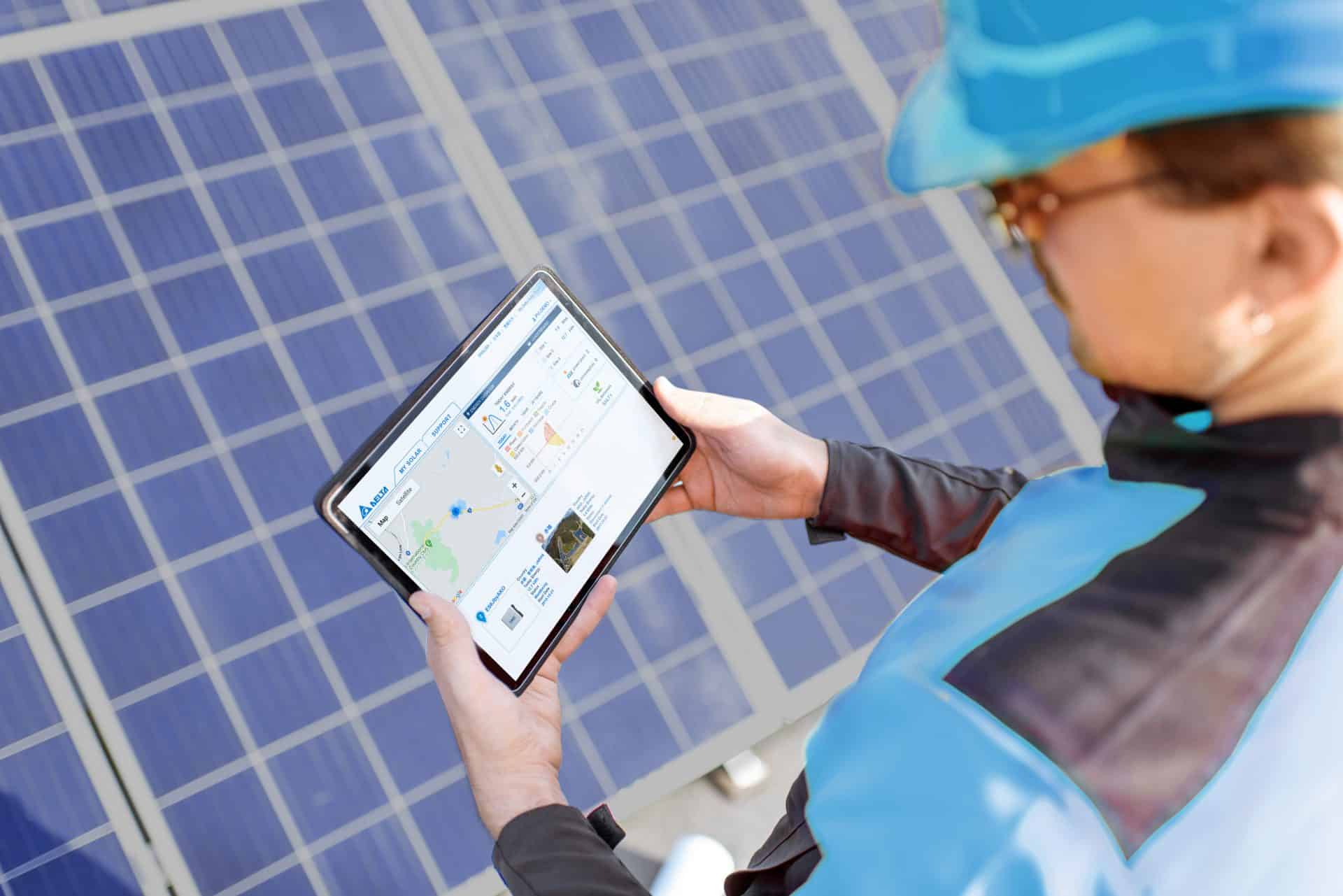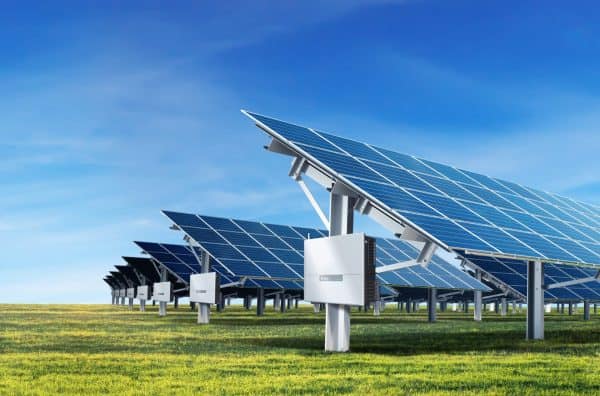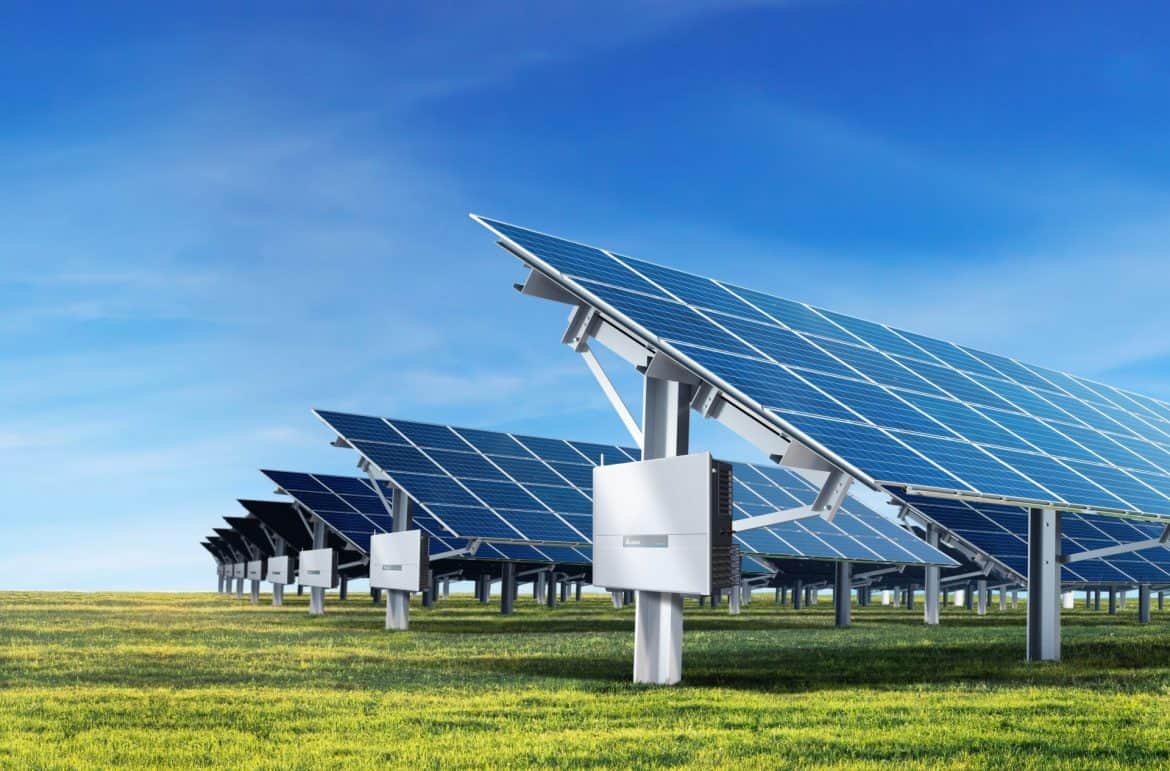Solar power plants are working at their maximum efficiency when each solar module is working properly and generating the most electricity possible. Given the sheer size of large-scale solar power plants, manually evaluating each solar panel shapes up to be an arduous if not impossible task for engineers to perform in an efficient manner. Prudent operators can overcome this problem by selecting inverters that can automate this process and thus help reduce their maintenance effort and cost.
To automate this process and ensure maximum efficiency, Delta’s range of inverters provide three key automated features: 1) electroluminescence (El) image testing, 2) string current monitoring, and 3) I–V curve scanning. By leveraging the functionality that these features bring, operators can take complete control of their maintenance and optimization objectives.
Predictive maintenance via EL image testing
Invisible to the human eye, the EL of a PV cell is detected by observing excited electrons releasing near-infrared light when external power is applied to the cell. Being able to capture that light through the process of EL imaging helps us understand panel performance. It also allows testing for damage, such as micro-cracks and breakages, or inconsistencies in the cell structure.
To perform a manual EL imaging test, operators need to use a CCD camera for observation and a power source to add current to the cells. Doing this manually takes a considerable amount of time and effort, because you would have to wire and set up each solar panel for inspection during night time. In a large PV plant, it is virtually unfeasible to reliably inspect all panels manually.
Power optimization via string current monitoring/I–V curve scanning

Operators who do not utilize string current monitoring to continuously monitor their PV installations are unable to immediately detect errors or reductions in power. This means lower current yield and lower return on investment.
Monitoring the relationship between the output current and output voltage is achieved through I–V curve scanning. For this, power extraction is optimized via maximum power point tracking (MPPT), which involves automatically adjusting the load to keep the power transfer at maximum efficiency.
I–V curve scanning performed offline and requires a technician to visit the site and carry devices to perform testing. For extremely large PV plants with thousands of PV modules, it is simply not possible to scan all PV modules. Further compounding the inefficiency is the time it takes to generate reports. This emphasizes the importance of automated I-V curve scanning, which can identify faulty or low-performance strings for proactive maintenance and lower running costs.
Maximize your plant’s efficiency with Delta’s offerings
Simply put, Delta’s PV inverters make PV plant maintenance easier.
For automatic EL imaging, Delta has added “PRO EL Mode” to their inverters, which injects adjustable string current 0–5 A, and this can be conveniently set using the MyDeltaSolar cloud and app or a third-party monitoring system. This saves considerably on labor effort and prevents PV connector breakage during testing and wiring at night.

Moreover, I–V curves can be obtained within 30 seconds, without having to power off. Their inverters utilize up to 12 MPP trackers to sample the output power of solar modules to monitor the power level. Automatic adjustments are then made to ensure maximum power is obtained.
Featuring maximum output power ratings ranging from 6.3 to 250 kW, Delta’s inverters deliver up to 99.2% peak efficiency. Their IP65/IP66 rated enclosures also ensure adequate protection from the environment, making them suitable for plants of any scale.
For example, the M70A_260 three-phase string PV inverter delivers 98.8% peak efficiency and features 6 MPPT sets. It offers an attractive power density-to-size ratio, featuring a maximum power output up to 77 kVA and providing greater flexibility for PV arrays facing different directions. At the top end, the M250HV three-phase string solar inverter delivers up to 250 kW with the widest operating voltage range of all our invertors (up to 1500 V) and above 99% peak efficiency.
For more information on our inverters and other products, please visit our website, or leave us a message [contact-form-7 id=”891″ title=”Contact Delta for more details”]

